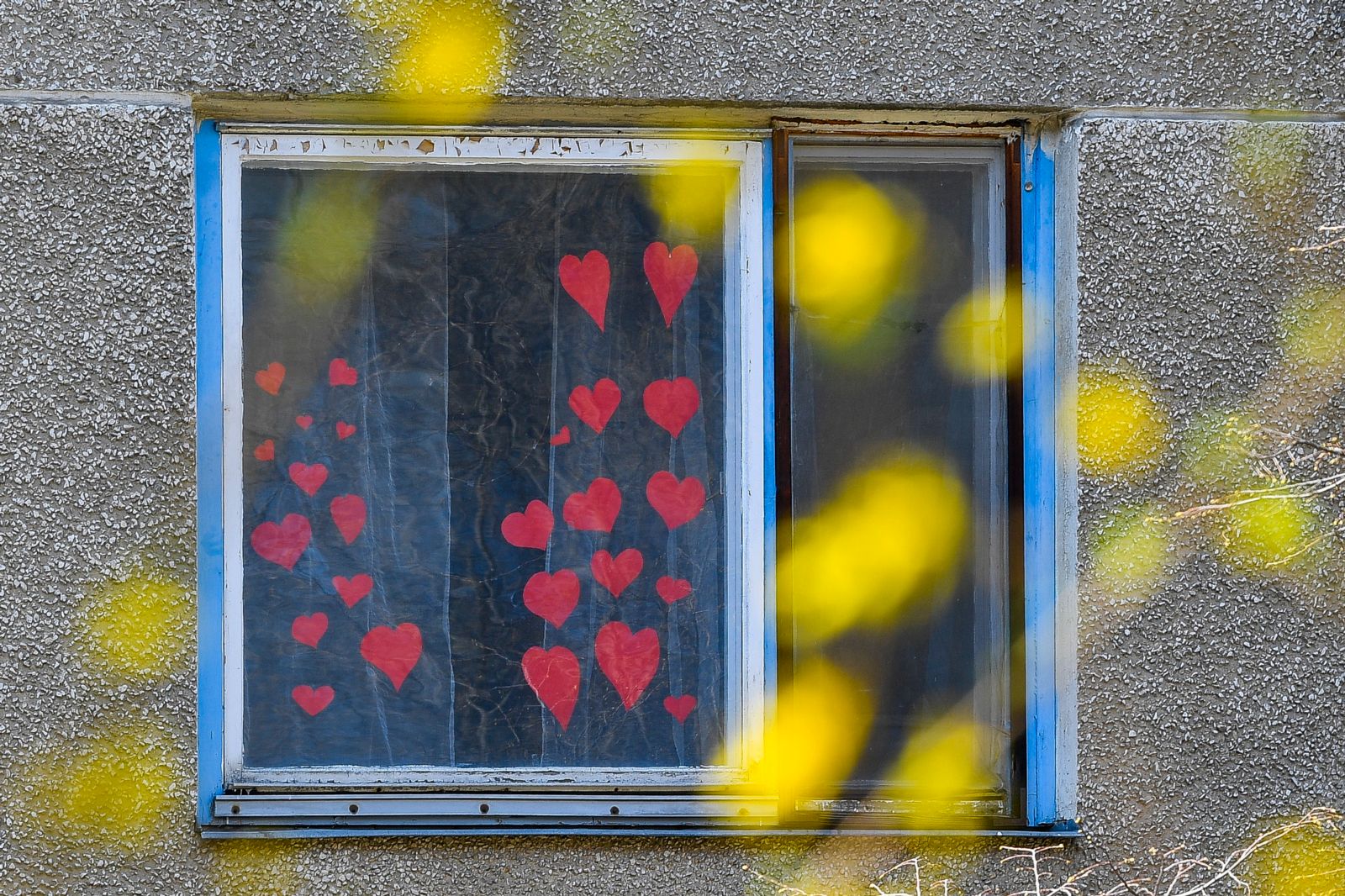In the middle of a global pandemic, red hearts spray-painted on pieces of wood line country roads in my rural Connecticut community, as a sign of solidarity with healthcare workers. A few hours away, across the five boroughs of New York City, people cheer and bang pots and play music from their windows and balconies and fire escapes every night at 7pm as health workers change shifts, in a similar demonstration of appreciation. Rural, urban, red, blue—the dominant theme in US political discourse for much of the past four years has been our growing and seemingly irreconcilable differences. Human rights—a discourse some (on the American left) have dismissed as either too “elite” or (on the right) too “alien to traditional values”—may have seemed a casualty of this divide.
But as the COVID-19 pandemic deepens across the this country and globally, scholars of economic rights (myself included) are finding that symbols like the red hearts offer a vehicle for deeper conversations about people at risk and the need for social safety nets and basic income guarantees that long pre-dated the pandemic. Basic access to healthcare, childcare, education, food, a living wage, workplace safety protections (including personal protective equipment)—these are all integral to protecting not only our own individual health and ability to fight the virus, but our common welfare and human dignity writ large. If it was difficult to show the interconnections among people and rights before the onset of COVID-19, we have an opportunity to do so now.
The virus has disproportionately affected people of color in the United States; and, with the highest rates of unemployment since the Great Depression, there are also millions of people of all races, education and income levels newly vulnerable to economic and social dislocation. Healthcare workers themselves vary in terms of earnings and education—from the highly paid and specialized physician to the lowest paid home health worker. If we display a red heart in our window, implicitly we are not differentiating among them. Yet our imagined healthcare worker deserving of thanks and respect may not “look” like the one who is most vulnerable. The red hearts offer an opportunity to think more deeply about who is inside (or outside of) that circle of caring. Precisely because of its legibility across political divides, the heart symbol offers an opportunity to ask why, and how to expand rights. Harsh Mander, one of India’s leading rights advocates, has called this a politics of radical and transformative love.
If it was difficult to show the interconnections among people and rights before the onset of COVID-19, we have an opportunity to do so now.
Cosmopolitanism—the notion that all people are deserving of respect and entitled to protection, regardless of citizenship status or other characteristics—may have seemed elusive (or naïve) pre-COVID-19. But we have an opportunity to harness emerging symbols and re-imagine their scope and depth, starting with the red heart. Mander insists that the mobilization of empathy is among the most important acts we can engage in. While mobilizing shame-and-blame has been a principal tactic of human rights promotion since the abolitionism of the nineteenth century and the advent of modern human rights advocacy of the twentieth, today Mander’s notion of transformative love offers a creative and unexpected form of power—a way to interpret and enact human rights that crosses political and social divides at a time when we are collectively vulnerable (though to differing extents).
People on the economic and social margins of their own societies have historically been among the principal drivers of rights-based social change, although there are varying degrees of privilege even at the margins. With a few notable exceptions, conventional histories of social movements often obscure those more complex mappings of power and privilege. Non-elite actors have transformed classic interpretations of human rights in visionary and pragmatic ways that have influenced “mainstream” rights discourses and practices centrally. But in order to understand those dynamics, we have to be willing to engage in human rights research that engages people at the margins as research partners (not subjects). And we have to be open to embracing tactics that expand empathy instead of shame. Using hearts as a touchstone for deeper conversations about economic rights and human vulnerability is a subtle but bold form of reinterpretation with potentially bolder, practical consequences.
We have to be open to embracing tactics that expand empathy instead of shame.
The pragmatism of economic rights advocates has enabled them to nimbly select the most advantageous venues for struggle. As I have explained elsewhere, economic rights advocates move between international and domestic normative frameworks and institutional structures to “do more than legitimate or contest existing international norms. They can forge entirely new ones or flesh out existing norms that have been underplayed or ignored.” The intellectual underpinnings of this work involve nonconventional partnerships across disciplines and social locations which afford collaborators the flexibility to “downplay, ignore, re-route, reject, or augment dominant human rights norms and traditional modes of advocacy, and in the process, expand the scope of claim-making and the nature of compliance.” Mutual learning and strategy-building around economic rights and nondiscrimination among people at the grassroots level—regardless of whether they are rural or urban—has helped legitimate, expand, and ground the discourse of human rights even before the COVID-19 epidemic.
What if we took the invitation to talk about the deeper patterns of exclusion at the “heart” of the spread of COVID-19, and did it in a manner that fostered conversation from a place of caring? The structures of injustice are deep and abiding and place us at risk—even if differentially so. The urge to applaud healthcare workers is also deeply rooted. Can we mobilize empathy in a manner that opens these uncomfortable conversations at a moment when we are all mutually vulnerable? We have the right and duty to try.




